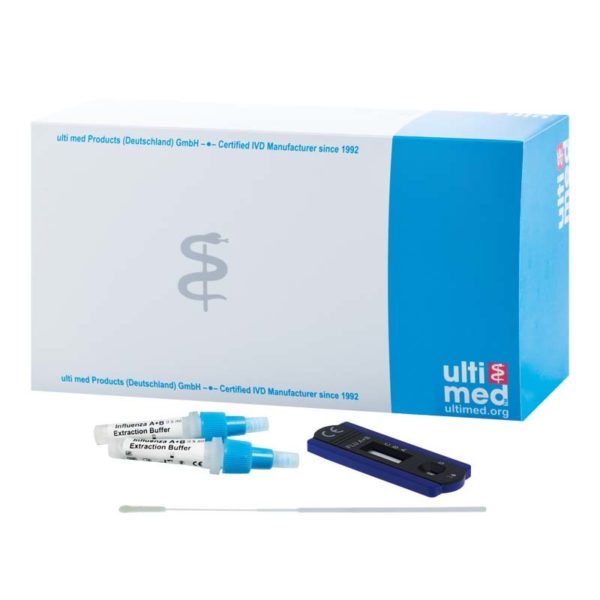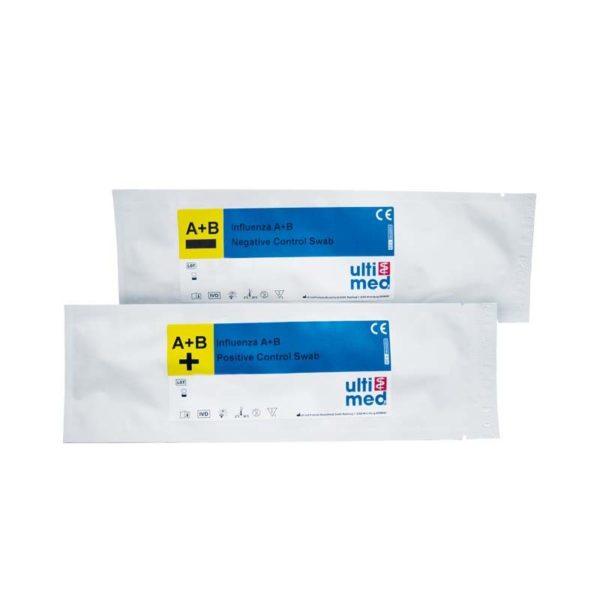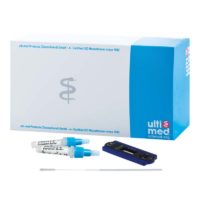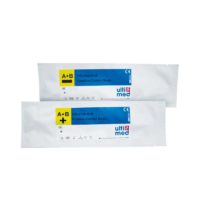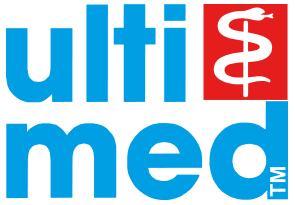Influenza A+B Antigen Test
- Article ID
- 014L480
- manufacturer
- ulti med Products (Deutschland) GmbH
- Handling time
Product description
The ulti med Influenza A+B Antigen Test is a rapid chromatographic immunoassay for the qualitative detection of Influenza A and B antigens in nasopharyngeal swab specimens. It is intended to aid in the rapid differential diagnosis of influenza A and B viral infections.
Summary
Influenza (commonly known as ‘flu’) is a highly contagious, acute viral infection of the respiratory tract. It is a communicable disease easily transmitted through the coughing and sneezing of aerosolized droplets containing live virus. Influenza outbreaks occur each year during the fall and winter months. Type A viruses are typically more prevalent than type B viruses and are associated with most serious influenza epidemics, while type B infections are usually milder.
The gold standard of laboratory diagnosis is 14-day cell culture with one of a variety of cell lines that can support the growth of influenza virus. Cell culture has limited clinical utility, as results are obtained too late in the clinical course for effective patient intervention. Reverse Transcriptase Polymerase Chain Reaction (RT-PCR) is a newer method that is generally more sensitive than culture with improved detection rates over culture of 2-23%. However; RT-PCR is expensive, complex and must be performed in specialized laboratories.
The Influenza A+B Antigen Test qualitatively detects the presence of Influenza A and/or Influenza B antigen in nasopharyngeal swab specimens, providing results within 15 minutes. The test uses antibodies specific for Influenza A and Influenza B to selectively detect Influenza A and Influenza B antigen in nasopharyngeal swab specimens.
Principle
The Influenza A+B Antigen Test is a qualitative, lateral flow immunoassay for the detection of Influenza A and Influenza B nucleoproteins in nasopharyngeal swab specimens. In this test, antibody specific to the Influenza A and Influenza B nucleoproteins is separately coated on the test line regions of the test cassette. During testing, the extracted specimen reacts with the antibody to Influenza A and/or Influenza B that are coated onto particles. The mixture migrates up the membrane to react with the antibody to Influenza A and/or Influenza B on the membrane and generate one or two colored lines in the test regions. The presence of this colored line in either or both of the test regions indicates a positive result. To serve as a procedural control, a colored line will always appear in the control region if the test has performed properly.


